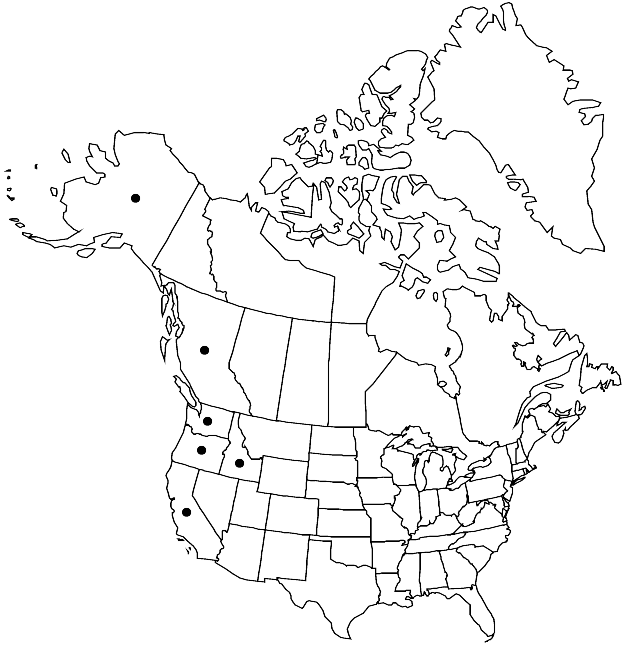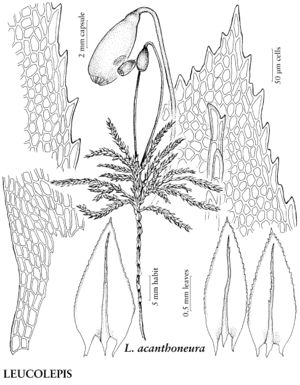Difference between revisions of "Leucolepis acanthoneura"
Not. Sällsk. Fauna Fl. Fenn. Förh. 9: 81. 1868.
FNA>Volume Importer |
FNA>Volume Importer |
(No difference)
| |
Revision as of 19:45, 24 September 2019
Stems spreading and recurved distally. Stem leaves on young shoots and subtending branches green to pale green, those below branches reddish brown proximally and hyaline distally, slightly contorted and rarely somewhat crisped when dry, appressed to stem proximally and slightly spreading distally, ± flat when moist, (2–)2.5–3(–4) mm; margins hyaline or reddish brown, teeth large, more pronounced distally, often at right angles to margin; apex long-acuminate; medial laminal cells elongate, 20–50 µm; marginal cells linear and short-linear, in 1 or 2 rows. Branch leaves green to dark green, moderately crisped when dry, spreading, keeled when moist, 1.3–2(–2.5) mm; margins green, teeth small, more pronounced distally, not at right angles to margin; apex acute, cuspidate; medial laminal cells short-elongate, short-rhombic, or ± isodiametric, 17–27 µm; marginal cells short-linear and rhomboidal, in 1 (or 2) rows. Capsule with annulus differentiated in 3 rows of cells; exostome papillose; endostome papillose, basal membrane porous, cilia 2 or 3.
Phenology: Capsules mature spring–summer.
Habitat: Soil, boulders, rotten logs, tree trunks, shaded habitats, often alongside trails in lowlands and forests
Elevation: low to moderate elevations (0-1000 m)
Distribution

B.C., Alaska, Calif., Idaho, Oreg., Wash.
Discussion
Plants of Leucolepis acanthoneura have the appearance of small palm trees due to their dendroid growth form and recurved branches. The specific epithet alludes to spiny teeth on the abaxial surface of the costa. Climacium dendroides, another dendroid moss in the west, is distinguished by rhizomelike stems, erect capsules, and broad, cordate stem leaves with rounded apices.
Selected References
None.
